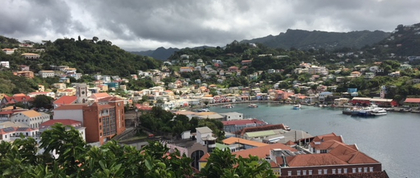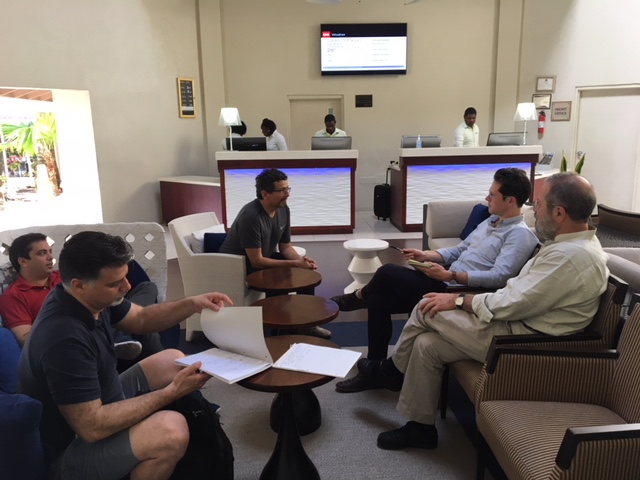
NYU GPH partners with Green Climate Fund and the Marron Institute for Urban Management on initiatives to improve education of climate change in Grenada.
April 20, 2018
Dear Colleagues and Students:
Sunday is Earth Day, so it’s appropriate that we turn our attention to the critical issue of global warming. This week we learned the terrific news that a $1 million grant toward readiness and preparatory support was awarded by the Green Climate Fund to the state of Grenada, in partnership with NYU GPH and the Marron Institute for Urban Management.
The Green Climate Fund was created by the Paris climate accord to build resilience, adaptation, and mitigation in developing countries. Grenada reached out to GCF and was referred to NYU for expert assistance on the science and education of climate change.
The proposal focuses on five components to make St. George’s, the capital of Grenada, “climate smart” through comprehensive mitigation strategy; active preparations for sea level rise and hurricanes; ecosystem restoration and water-system enforcement; urban densification and climate-resilient urban expansion; and capacity building for green development.
With its low-lying cities, Grenada is extremely vulnerable to the adverse effects of climate change. Sea level rise and storm surges are likely to cause inundation and erosion. Extreme events, and hurricanes in particular, are projected to become more intense and more frequent. Rising sea temperatures, in combination with untreated sewage, can be expected to damage its coral reefs. Reduced rainfall already threatens its ability to provide regular water supplies. Its ecosystems are under pressure of saltwater intrusion, mudslides, and wastewater intrusion into watersheds.
Grenada has very limited resources--human, fiscal, or financial--to confront climate change on its own. Given its population of 107,000, it will need to rely on external resources to plan and implement projects and programs that address its mitigation and adaptation needs in the years to come.
In February 2018, I joined a six- member interdisciplinary team (below), led by Dr. Shlomo Angel of the Marron Institute, for meetings in St. George’s. Coming into the airport, we saw that the runway practically emerged from the sea, and the resort hotels where we stayed were at sea level and would beat a retreat with sea level rise.

Nearby was St. George’s University and Medical School, which has graduated 14,000 MDs since its beginning in 1976 and enrolls 1,000 students in each class. They specialize in small group discussion and after the first two years of basic science send the students to the U.S., especially New York City, for clinical rotations. They have added a school of public health, a nursing college, a graduate school and an undergraduate college. Tuition is expensive, averaging $65,000 per year, though scholarships are available for Grenadians and the underprivileged in New York, followed by commitments to serve in the New York City Health and Hospitals system.
Research is active on dengue, Zika, and arthropod vectors important to the Caribbean and the changing climate. St. George’s would like to participate in an educational program on climate change, including a solar farm and a sewage treatment plant specific to the University. This includes introducing new public health courses in the school of public health at St. George’s University! Recently, it has jointly launched an institute called WINDREF, working with the United Nations Framework Convention on Climate Change.
It’s an exciting opportunity in which GPH will play an important role in collaborating on climate change research -- and it’s perfectly timed to celebrate Earth Day on Sunday!
Have a great weekend,
Bill
Dr. William Rom
GPH Contributing Faculty